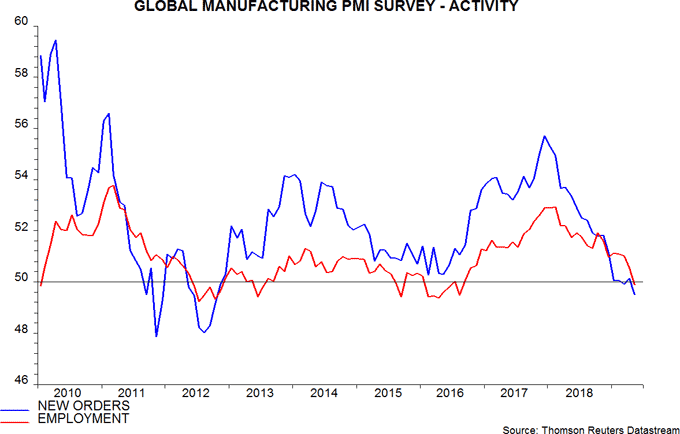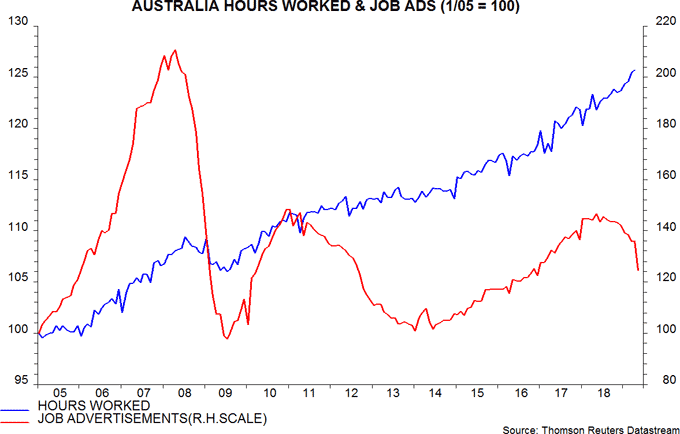Labour market watch: more downbeat news
The view here remains that global economic weakness is spreading to labour markets, implying that it is becoming entrenched and will require more significant policy easing to reverse. Three news items in recent days are consistent with this development.
First, the global manufacturing employment index moved below 50 (to 49.9) in May, meaning that more companies (weighted by size) cut rather than added jobs last month. Turning points in the employment index usually lag those in the new orders index, which also fell further in May, suggesting additional weakness in the employment measure – see first chart.

Secondly, following news of further falls in German vacancies and Japanese job offers, Australian job advertisements plunged in May to their lowest level since 2016 – second chart. Accompanying commentary claimed that holiday timings and election uncertainty were largely responsible, implying a June rebound; an alternative interpretation is that the decline in advertisements had paused in April and the big May fall reflects a catch-up effect.

Thirdly, Japanese labour market cooling was confirmed by a further decline in May in the component of the consumer confidence index measuring employment prospects over the next six months – third chart. The recent fall in overall confidence is ominously similar to the slide preceding the April 2014 sales tax rise; consumer spending contracted by 2.0% in the year to the fourth quarter of 2014.



Reader Comments (1)
Indeed, this period of economic weakness is just getting started.
The issue is what monetary easing is left?
Most central banks have held near emergency policy positions seemingly right to the top of the cycle.